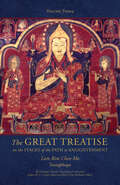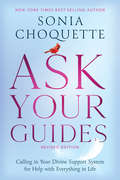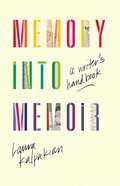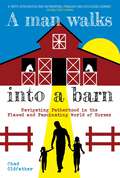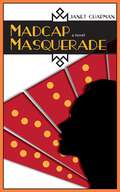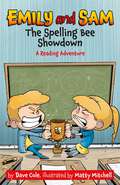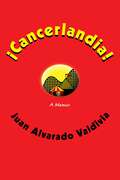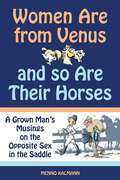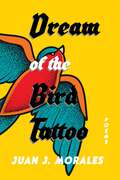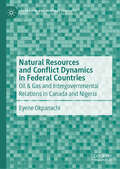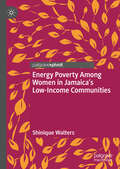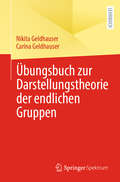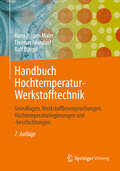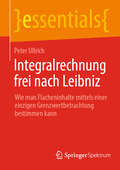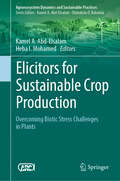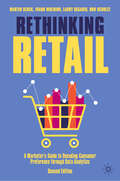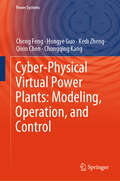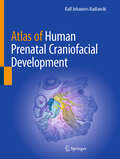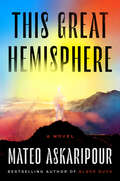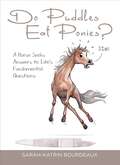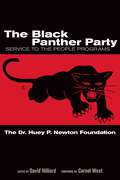- Table View
- List View
The Great Treatise on the Stages of the Path to Enlightenment (The Great Treatise on the Stages of the Path, the Lamrim Chenmo)
by Tsong-kha-paThe third volume of the 15th-century spiritual classic that condenses Buddhist teachings into one easy-to-follow meditation manualThe Great Treatise on the Stages of the Path to Enlightenment (Tib. Lam rim chen mo) is one of the brightest jewels in the world&’s treasury of sacred literature. The author, Tsong-kha-pa, completed it in 1402, and it soon became one of the most renowned works of spiritual practice and philosophy in the world of Tibetan Buddhism. Because it condenses all the exoteric sūtra scriptures into a meditation manual that is easy to understand, scholars and practitioners rely on its authoritative presentation as a gateway that leads to a full understanding of the Buddha&’s teachings.Tsong-kha-pa took great pains to base his insights on classical Indian Buddhist literature, illustrating his points with classical citations as well as with sayings of the masters of the earlier Kadampa tradition. In this way the text demonstrates clearly how Tibetan Buddhism carefully preserved and developed the Indian Buddhist traditions.This first of three volumes covers all the practices that are prerequisite for developing the spirit of enlightenment (bodhicitta).
Ask Your Guides: Calling in Your Divine Support System for Help with Everything in Life, Revised Edition
by Sonia ChoquetteThe New York Times best-selling author of Soul Lessons and Soul PurposeWe&’re all spiritual beings with a spiritual support system on the Other Side that oversees and helps guide our lives from the moment we&’re born to the moment we leave our physical bodies and return to Spirit. Not knowing this fact is a severe handicap, as the Universe is designed to care for and nurture all its creatures and help make our life&’s journey easier and more successful. When we learn how to connect with our angelic guides, our lives naturally fall into a pattern of ease and flow during which we grow our souls, fulfill our life&’s purpose, and make our time on Earth endlessly entertaining. This fascinating and inspirational book by Sonia Choquette provides all the information you need to help you connect with your spirit guides so that you can enjoy all the love, abundance, and joy you&’re entitled to.
Memory into Memoir: A Writer's Handbook
by Laura KalpakianThe memoir is not the story of what you know, it&’s the story of how you learned it.Memory into Memoir provides a lively guide for anyone looking to wrestle the unruly past onto the page. In thirteen chapters, Laura Kalpakian provides tools to develop narrative form, scenic depiction, character development, and dialogue. There are chapters devoted to excavating the Family Story and the slippery Truth, especially when telling stories not solely your own. Kalpakian explores the use of letters, diaries, and photographs, and she offers tips for research, publishing choices, and the uses of music. With a broad exploration of technique and development, and a range of reference, Memory into Memoir includes examples, extensive resources, and animating prompts. The seasoned writer, the aspiring writer, and the reluctant writer looking for a knowledgeable, encouraging companion will find Memory into Memoir the go-to guide for a successful, fulfilling writing experience.
Man Walks Into a Barn
by Chad OldfatherA smart, funny memoir exploring the evolution of a man and his relationship with his daughters as they grow up in the grips of the equestrian life. When Chad Oldfather found himself the parent of a toddler who, out of nowhere, became obsessed with horses, he had no idea what awaited. With his younger daughters similarly afflicted, Oldfather was soon enmeshed in the consuming subculture of barns, riding, and horse shows, learning not just about the animals that so inexplicably drew his girls, but also about the people and personalities that populated the spaces around them. A book for parents, whatever their children's interests, and for equestrians, who know what it's like &“on the inside&” (but maybe not what it's like on the outside, looking in), A Man Walks into a Barn is a wise, witty, and, at times, critical look at both the light and dark sides of youth sports, and equestrianism in particular. Readers find themselves rooting for Oldfather as he struggles to be the best dad he can, supporting a child's dreams in the face of long odds and extraordinary expenses. He writes about his parenting choices and the strange world he finds himself in with humor and honesty, critically examining riding's high cost and the inaccessibility and inequality that results. Aware of the flaws and dangers of youth athletics, as well as the benefits, he strives to protect his girls while supporting their ambitions the best ways he knows how. Filled with the joys, heartbreaks, and life lessons that come from training, competition, and time in the company of horses, this is mostly a book about family, and the strong bonds that can form when parent and child join hands and pursue a passion together.
Madcap Masquerade: A Novel
by Janet ChapmanThe festive 1920s in Santa Fe are the setting for this comic romance. After a slip with the scissors has refashioned her bob, the novel&’s twenty-year-old heroine, Amanda Williams, embraces the mistake, deciding to check into La Fonda to attend the next day&’s Fiesta disguised as a boy. Soon she is entangled in a net of mistaken identities.
The Spelling Bee Showdown (Emily and Sam)
by David ColeTwins Emily and Sam decide to bet on who will win the class spelling bee, with the loser having to write a fable for their class assignment. They soon learn that they have to decide between winning and supporting their sibling.Emily loves reading, so she&’s excited when her teacher announces that the class will be reading fables. Her brother, Sam, is less thrilled. He prefers spelling to reading. In fact, because he loves learning spelling rules, he&’s sure he&’ll win the upcoming spelling-bee. But Emily thinks her reading skills will give her the upper hand.Emily gets right to studying, but the spelling list is harder than she expected. Meanwhile, Sam is preoccupied with a new classmate. This bet might be more than either sibling bargained for!
¡Cancerlandia!: A Memoir
by Juan Alvarado ValdiviaDiagnosed with Hodgkin&’s lymphoma three weeks after his thirtieth birthday, Juan Alvarado Valdivia finds himself immersed in Cancerlandia—oncology appointments, waiting rooms, and chemotherapy infusions at San Francisco General Hospital. Afraid that the illness will destroy his fledgling relationship and writing aspirations, Alvarado Valdivia tries to lead a normal life. He bikes three miles to his treatments while listening to heavy metal, attends writing workshops, and continues his hard-partying ways. When his girlfriend Paola ends their on-again, off-again relationship after a particularly troubling episode of binge drinking, he begins to acknowledge his anger and alcohol abuse.Comic and unsparing, ¡Cancerlandia! chronicles Alvarado Valdivia&’s journey as he not only fights to survive his personified adversary, Mr. Hodgkins, but also as he struggles with his own self-destructive spirit.
An Encrypted Clue: The Math Kids (Book 4) (The Math Kids)
by David ColeWhen Stephanie Lewis finds secret writing in the margin of an old book in the library, the Math Kids have a new puzzle to solve. But first, they must learn about codes and ciphers, and how to use their math skills to solve them. As one clue leads to another, the kids are drawn into the mysterious old house that overlooks the town. Is it really haunted like some townspeople say? And who is the man in the long beard who keeps showing up everywhere they go? But that's not their only problem. Unless they can find a solution, the math competition they've been training so hard for will be cancelled. Jordan, Stephanie, Justin, and Catherine will need to use all their problem-solving skills to figure out the clues before it&’s too late. The Math Kids: An Encrypted Clue is the fourth adventure in David Cole's popular Math Kids series.
Women Are from Venus and So Are Their Horses
by Menno KalmannThe world of horsemanship is teeming with women and girls who are totally devoted to their trusty steeds. Often, fathers or husbands are involved as well, dragged unwillingly and unknowingly into this alternate reality. One such man is the author of this book, whose life revolves entirely around his wife and her horses. He really doesn't feel connected to horses in any way; he doesn't speak the jargon, and he is locked in an unending struggle with stables, horse trailers, and arenas. Regular nocturnal rude awakenings have been his lot—his experiences include helping a mare give birth, calling the veterinarian any number of times, and of course, packing up and accompanying his wife to competitions long before daybreak. This book is a hilarious insider's view of the struggles of the male who is connected with a horse-loving female. Anyone who has spent time in a relationship with either a horse, horsewoman, or long-suffering man will delight in reading it, and laugh out loud at the charming cartoons that ring all-too-true.
New Mexico Territory During the Civil War: Wallen and Evans Inspection Reports, 1862-1863
by Jerry D. ThompsonIn the summer of 1862 the Civil War was going badly for the North. The distant New Mexico Territory, however, presented a different situation. After an invading army of zealous Texas Confederates won the field at Valverde near Fort Craig, Colorado Volunteers fell on the Rebels at Glorieta Pass and crushed Confederate dreams of conquering New Mexico and the Far West. The Texans, hungry and disheartened, retreated, leaving uncertainty and social unrest in their wake.By the late summer of 1862, Gen. James Henry Carleton arrived from California, determined to impose federal control on the territory. Major Henry Davies Wallen and Captain Andrew Wallace Evans were appointed inspector general and assistant inspector general, respectively. Fearing a second Confederate invasion, Carleton had Wallen and Evans examine various routes the Rebels might use to invade the territory as well as a variety of logistical and operational issues. Tellingly, their reports repeatedly mention troop drunkenness and poor relations with the locals as primary problems. These inspection reports, edited by award-winning Civil War historl War years.ian Thompson, provide unique insight into the military, cultural, and social life of a territory struggling to maintain law and order.
Dream of the Bird Tattoo: Poems and Sueñitos (Mary Burritt Christiansen Poetry Series)
by Juan J. MoralesIn this brilliantly rendered collection—the author’s fourth—Juan J. Morales explores love and grief after the death of his father. Morales weaves his father’s personality, his childhood in Puerto Rico, and his service in the US military with his own interest in life after death. In these poems he guides the reader through ghost hunts, conversations with mediums, a series of dreams in which he and his father work through his father’s crossing over together, and his ultimate acceptance of this monumental loss. Dream of the Bird Tattoo beautifully showcases how our loved ones continue to live on in our memories and actions.
Beyond Horse Massage
by Jim MastersonWould you like to enable your horse to perform and feel better, to overcome old limitations and restrictions and reach its full potential?In this book, Jim Masterson, Equine Massage Therapist for the 2006 and 2008 and 2010 USET Endurance Teams, and for equine clientele competing in FEI World Cup, Pan American and World Games competitions, teaches a unique method of equine bodywork, in which the practitioner recognizes and follows the responses of the horse to touch to release tension in key junctions of the body that most affect performance.This practical book:Contains step-by-step instructions, photographs and illustrationsIs ideally suited to accompany you to the barn, where you will practice the Masterson Method techniques on horses.Includes chapters with tips & techniques, anatomical explanations and examples from Jim's practice help deepen your understanding.Has a quick reference section that will point you to exercises that are specifically suited to your particular discipline—dressage, endurance, eventing, show jumping, barrel racing, or others in the vast realm of horse sports.By using these techniques, and knowing the responses to look for, you are able to:Achieve a release of accumulated stress in deep-seated key junctions of the horse's body that affects mobility, comfort, attitude, training and performance.Restore muscular and structural balance, and natural alignment.Enable your horse to perform optimally and respond to your training without stiffness and pain.Achieve new levels of communication and trust with your horse that spill over into other areas of interaction.
Natural Resources and Conflict Dynamics in Federal Countries: Oil & Gas and Intergovernmental Relations in Canada and Nigeria (Federalism and Internal Conflicts)
by Eyene OkpanachiThis book examines the dynamics of oil and gas conflicts within the context of federalism in Canada, an older federation with broadly a decentralized institutional design governing oil and gas, and Nigeria, a newer federation with a largely centralized design. It traces resource ownership, control or regulation, and revenue sharing conflict processes over time, and provides a focused comparison of conflict over the role of oil in intergovernmental fiscal transfers in both countries. In so doing, the book provides a much-needed corrective to conventional, static notions of oil conflict as either violent or nonviolent outcomes by carefully analyzing the evolution and ebbs and flows of conflicts hidden within conflict patterns that appear to be self-reinforcing and entrenched. The book demonstrates that (de)centralization dynamics, especially the continuities and shifts in federal institutional (structural and ideational) rules about oil itself,are central to the concept of conflict dynamics. It highlights the endogenous processes of federal institutional development, and lends credence to the historical institutionalists’ emphasis on the entanglement of institutions in their own transformation. Yet, the book also reveals that conflict dynamics did not emerge solely from the initial "compromise" between federal and provincial/state actors regarding the allocation of competence over oil. The renegotiation and reinterpretation of these rules over time, which entails a redistribution of power/resources in response to historical temporalities and shocks, political agency, and changing socioeconomic realities, also generated unique patterns of conflict and conflict resolution within the federal institutional arenas.
Energy Poverty Among Women in Jamaica’s Low-Income Communities
by Shinique WaltersThis Palgrave Pivot investigates energy poverty in Jamaica, which is a growing problem that affects the mental, physical, and financial health of individuals, families, and communities, and its specific impact on women. Using quantitative and qualitative methods, this study demonstrates the shared relationship between energy development and economic development. It argues that the development of the energy sector has not been a gender-neutral process and has evolved and transitioned within the context of the global political economy, which has been irrevocably shaped and impacted by the lack of government regulation, an increase in efforts at privatization, and the effects of liberalization in terms of the development. Specifically, it shows that more often than not women bear the burden of sourcing, collecting, and using energy for household activities, agriculture, and income-generating tasks. As such, women are affected by energy poverty in many ways, including but not limited to time burdens and drudgery, health issues and physical burdens, as well as the issues that arise due to restrictions on information. This book will be of interest to students and scholars in gender studies, global development, economics, and politics, as well as policymakers and activists dedicated to gender equality and energy justice.
Übungsbuch zur Darstellungstheorie der endlichen Gruppen
by Nikita Geldhauser Carina GeldhauserDieses Übungsbuch vermittelt die Grundlagen der Darstellungstheorie endlicher Gruppen anhand von Beispielaufgaben: Es bietet eine entsprechende Sammlung interessanter Übungsaufgaben mit ausführlichen Lösungen und Hinweisen. Das Buch setzt dabei bewusst auf Klasse statt Masse – es wurden ausschließlich wichtige, interessante und „schöne“ Aufgaben ausgewählt, die dem Verständnis und der Durchdringung der Theorie besonders dienlich sind. Die Aufgaben sind nach Themen sortiert, und in den jeweiligen Kapiteln ist die Theorie kurz zusammengefasst, die für das Lösen der Aufgaben nötig ist. Es werden Aufgaben präsentiert, die zur Vertiefung des Stoffs kanonisch sind, aber auch besonders interessante Inhalte hervorgehoben und Verbindungen zwischen verschiedenen Themen aufgezeigt. Mehrere Aufgaben enthalten außerdem Sudoku-artige Fragestellungen verschiedener Komplexität zur Aufstellung von Charaktertafeln endlicher Gruppen. Interessierten Studierenden bietet dieses Buch die Möglichkeit, ihr Selbststudium in Etappen aufzuteilen und somit schnell und zielgerichtet voranzukommen. Dozierenden bietet die Aufgabensammlung passende Übungsaufgaben mit hinreichend großem Lerneffekt für die eigene Lehre.
Handbuch Hochtemperatur-Werkstofftechnik: Grundlagen, Werkstoffbeanspruchungen, Hochtemperaturlegierungen und -beschichtungen
by Hans Jürgen Maier Thomas Niendorf Ralf BürgelDieses Handbuch zeigt umfassend und systematisch die metallkundlichen Vorgänge oberhalb etwa 40 % der absoluten Schmelztemperatur. In diesem Standardwerk werden vor allem Hochtemperaturlegierungen für Einsatztemperaturen über 500 °C und deren Beanspruchungen in Bauteilen praxisnah dargestellt. Die vorliegende Auflage wurde überarbeitet und das Kapitel zur Additiven Fertigung um aktuelle Entwicklungen ergänzt. Das Verzeichnis der Werkstoffe wurde aktualisiert. Das Buch hat sich als zuverlässiger Ratgeber in Studium und Beruf bewährt.
Integralrechnung frei nach Leibniz: Wie man Flächeninhalte mittels einer einzigen Grenzwertbetrachtung bestimmen kann (essentials)
by Peter UllrichIn einem Manuskript aus dem Jahre 1676 behandelt Gottfried Wilhelm Leibniz (1646–1716) die Integration monotoner Funktionen. Hieraus lässt sich eine Integrationstheorie entwickeln, mittels derer man alle in der Schule verwendeten Basisfunktionen integrieren und allgemeine Integrationsregeln herleiten kann. Im Gegensatz zu dem üblichen formalen Zugang benötigt diese Theorie nur einen propädeutischen Grenzwertbegriff, wie er in den KMK-Bildungsstandards gefordert wird; letztlich reicht eine einzige Grenzwertbetrachtung aus. Zudem wird die Integralrechnung nicht auf eine Umkehrung der Differentialrechnung reduziert.
Elicitors for Sustainable Crop Production: Overcoming Biotic Stress Challenges in Plants (Sustainability Sciences in Asia and Africa)
by Kamel A. Abd-Elsalam Heba I. MohamedThis book covers all aspects of biotic stress, with detailed focus on elicitors to alleviate adverse effects on plant development and growth. Elicitors are substances that can trigger plants to mount defenses against biotic stressors. Exogenous elicitor application prior to stress events modifies transcription factors, enhancing plant resilience. This book explores the role and applications of elicitors that activate a plant's immune system, leading to increased resistance against biotic stressors. This book also explains how elicitors, both abiotic and biotic, can trigger physiological and morphological responses and phytoalexin accumulation. By reducing reliance on harmful pesticides, this guide fosters a more sustainable and environmentally friendly agricultural approach. " This book is a resource for researchers, agricultural professionals, and farmers seeking solutions to combat biotic stress in crops. Whether you're a seasoned grower or just starting out, this book provides practical strategies and insights to safeguard your crops and achieve a healthier, more productive harvest, empowering you to cultivate a thriving future for your crops and the environment.
Rethinking Retail: A Marketer’s Guide to Decoding Consumer Preference through Data Analytics
by Martin Block Don Schultz Larry DeGaris Frank MulhernRetailing has changed rapidly in recent years with the pandemic accelerating the long-term growth of e-commerce. Drawing on a unique data set drawn from hundreds of thousands of interviews over almost two decades, this book takes a close look at changes in consumers&’ shopping preferences, behaviors, and influences. Across a range of topics, the authors argue that the rise of e-commerce has coincided with a decline in consumer preferences—what people buy and where they buy it. This presents challenges for both retailers and manufacturers. The authors propose that the answer lies with consumers. A focus on consumers is fundamental to designing effective marketing strategies and campaigns. However, retailers and brands often have different perspectives about consumers. This book bridges that gap. The broad scope of topics and longitudinal data give retailers and brand marketers a roadmap for building and maintaining consumer preference in a rapidly changing and challenging environment.
Cyber-Physical Virtual Power Plants: Modeling, Operation, and Control (Power Systems)
by Chongqing Kang Qixin Chen Hongye Guo Kedi Zheng Cheng FengCyber-physical Virtual Power Plants (VPPs), a revolutionary framework designed to harness the collective potential of distributed energy resources (DERs) via communication technologies, are crucial for integrating large of renewable generators into future energy grids securely and cost-effectively. This is the pioneering book that systematically explains and explores the operation and control of VPPs from a cyber-physical perspective. Born out of the authors&’ continuous research and engineering practice in the field of VPPs, this book lays the theoretical foundation for the topic and thoroughly presents straightforward solutions to the challenges encountered in cyber-physical VPPs. This book is a useful reference for researchers, graduates, and engineers interested in and working on VPPs, cyber-physical system designs, and Internet of Things applications.
Sustainable Finishing Techniques in Textiles
by Mohammad Shahid Santosh Biranje Ravindra V. AdivarekarThis book highlights cutting-edge advancements in textile finishing techniques, offering a comprehensive overview of mechanical, chemical, and sustainable methods. It highlights biodegradable and bioactive finishes, focusing on health, hygiene, and aroma applications. Biotechnological innovations, including microbial enzymes and enzymatic processes, are discussed as eco-friendly solutions for modern textile production. The book examines advancements in polymeric materials, plasma technology, and thermal regulation with phase-change materials, showcasing their role in enhancing performance and sustainability. It also delves into flexible electronics in textiles and innovations in agro-textiles, emphasizing sustainable raw materials and finishing techniques. With a focus on current challenges, future prospects, and the assessment of sustainable finishes, this publication serves as a key resource for understanding transformative technologies shaping the environmentally conscious textile industry.
Atlas of Human Prenatal Craniofacial Development
by Ralf Johannes RadlanskiThis comprehensive atlas captures the prenatal formation of the human head with precision and detail, helping the reader discover the intricate world of craniofacial development. It serves as both a rich visual reference and a foundation for further research on how molecular signaling shapes the unique features of the craniofacial structure. Authored by a leading researcher with more than four decades in prenatal morphogenesis, this atlas goes beyond existing texts by offering an in-depth look at embryonic head formation through high-quality histology and advanced 3D reconstructions. More than 400 meticulously curated, vivid color images include detailed illustrations and 3D models that trace each crucial stage in the development of the human head's anatomical structures. An invaluable resource for scientists, medical professionals, educators, and anyone studying human development, the Atlas of Human Prenatal Craniofacial Development provides insights that lay the groundwork for understanding not only human morphology but also the roots of congenital anomalies.
This Great Hemisphere: A Novel
by Mateo Askaripour&“A thrilling page-turner.&”—Brit Bennett, #1 New York Times bestselling author &“Wildly imaginative.&”—The Washington Post&“Askaripour soars.&”—The Boston GlobeA rallying cry for anyone who has ever felt invisible. A powerful, captivating novel about how far we&’ll go to protect the ones we love, and what happens when we resist the narratives others write about us. Welcome to the Northwestern Hemisphere, 2529. An equally exciting and terrifying world born from the ashes of our own, where almost half of people are born invisible, and thus relegated to second-class citizenship. Sweetmint, a young invisible woman, has done everything right her entire life, from excelling in school to landing a highly sought-after apprenticeship with a mysterious, powerful inventor. But all she has fought so hard to earn comes crashing down when she learns that her missing brother, whom she had presumed dead, is not only alive and well but also the primary suspect of a high-profile political murder. Armed with nothing more than courage, intellect, and unwavering love for her brother, Sweetmint sets off on the mission of a lifetime: to find her brother before it&’s too late. With five days until the hemisphere&’s big election, Sweetmint must evade and outsmart all who aim to destroy her and her people, braving a world full of hard truths that many would rather remain hidden.
Do Puddles Eat Ponies?
by Sarah-Katrin BourdeauxA humorous look at the world through the eyes of a horse, peppered with satirical observations about the equestrian world.Sharif, an easily spooked Arabian, is trying to find his life&’s calling, but between the truly terrifying dangers of everyday life and the strange hoofless beings that wave their tiny tentacles at his nose, it is proving a challenge! Barely do his newborn hooves touch the ground for the first time and already he&’s in mortal danger—and the hoofless beings really aren&’t helping anything. The world is full of monsters and mysteries as far as the eye can see!As he ventures out beyond the paddock he shared with his mom, Sharif gets dragged into all manner of dark worlds and questionable jobs, and is constantly surrounded by unusual characters he&’s not sure he can trust, including The Chicken, The Fat Boss, and Dumb-as-Rocks. But even when the threats behind every bush grow more menacing, he doesn&’t lose sight of his ultimate goal: to be the most famous and beautiful show horse under the sun.Then, just before his greatest triumph, the hoofless betray Sharif to cold-blooded criminals, and everything—evenreally, this time, his life—seems to be at stake. Can one little Arabian horse stretch his courage and reach his dream?This hilarious, unusual, superbly imagined illustrated novel for &“grownups who like horses&” is destined to be a hit with anyone who enjoys a little bit of ridiculous and a slightly cynical take on the subcultures that bind us.
The Black Panther Party: Service to the People Programs
by David HilliardThe Black Panther Party represents Black Panther Party members' coordinated responses over the last four decades to the failure of city, state, and federal bureaucrats to address the basic needs of their respective communities. The Party pioneered free social service programs that are now in the mainstream of American life. The Party's Sickle Cell Anemia Research Foundation, operated with Oakland's Children's Hospital, was among the nation's first such testing programs. Its Free Breakfast Program served as a model for national programs. Other initiatives included free clinics, grocery giveaways, school and education programs, senior programs, and legal aid programs. Published here for the first time in book form, The Black Panther Party makes the case that the programs' methods are viable models for addressing the persistent, basic social injustices and economic problems of today's American cities and suburbs.
